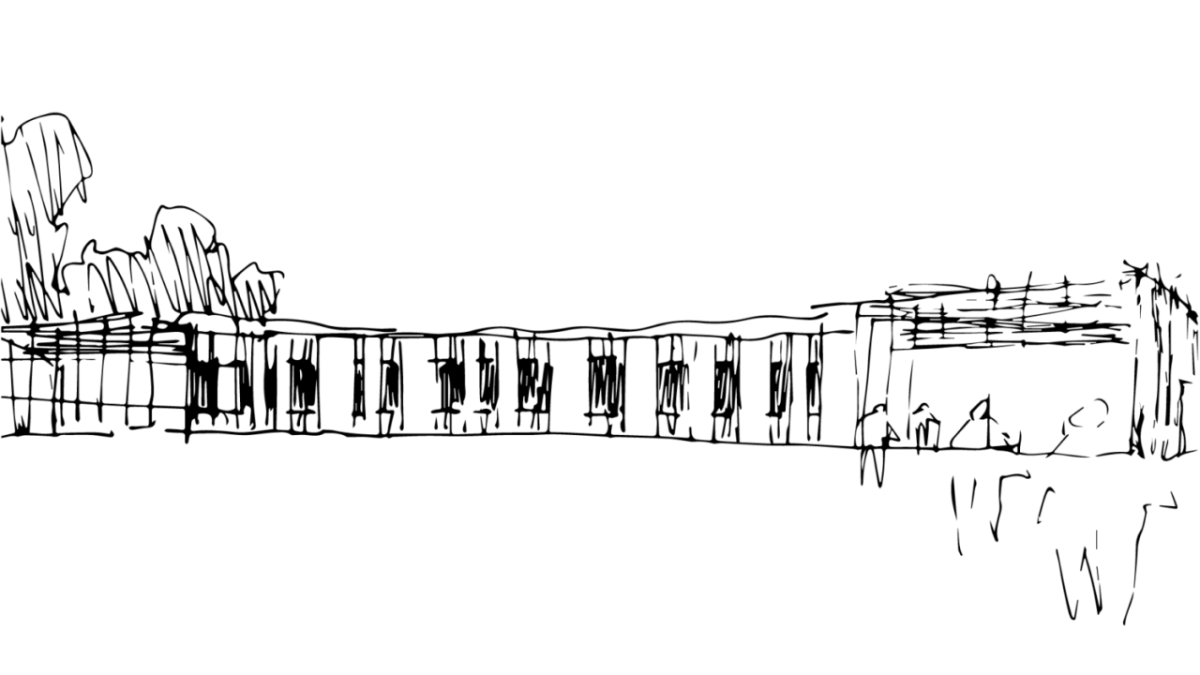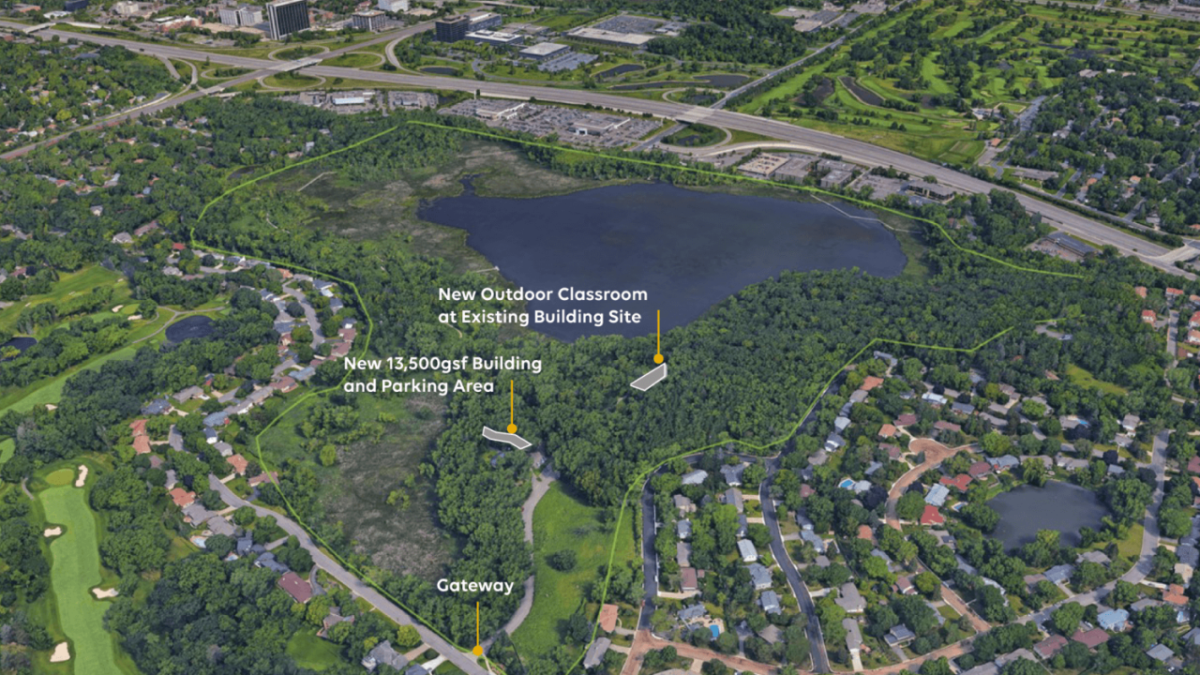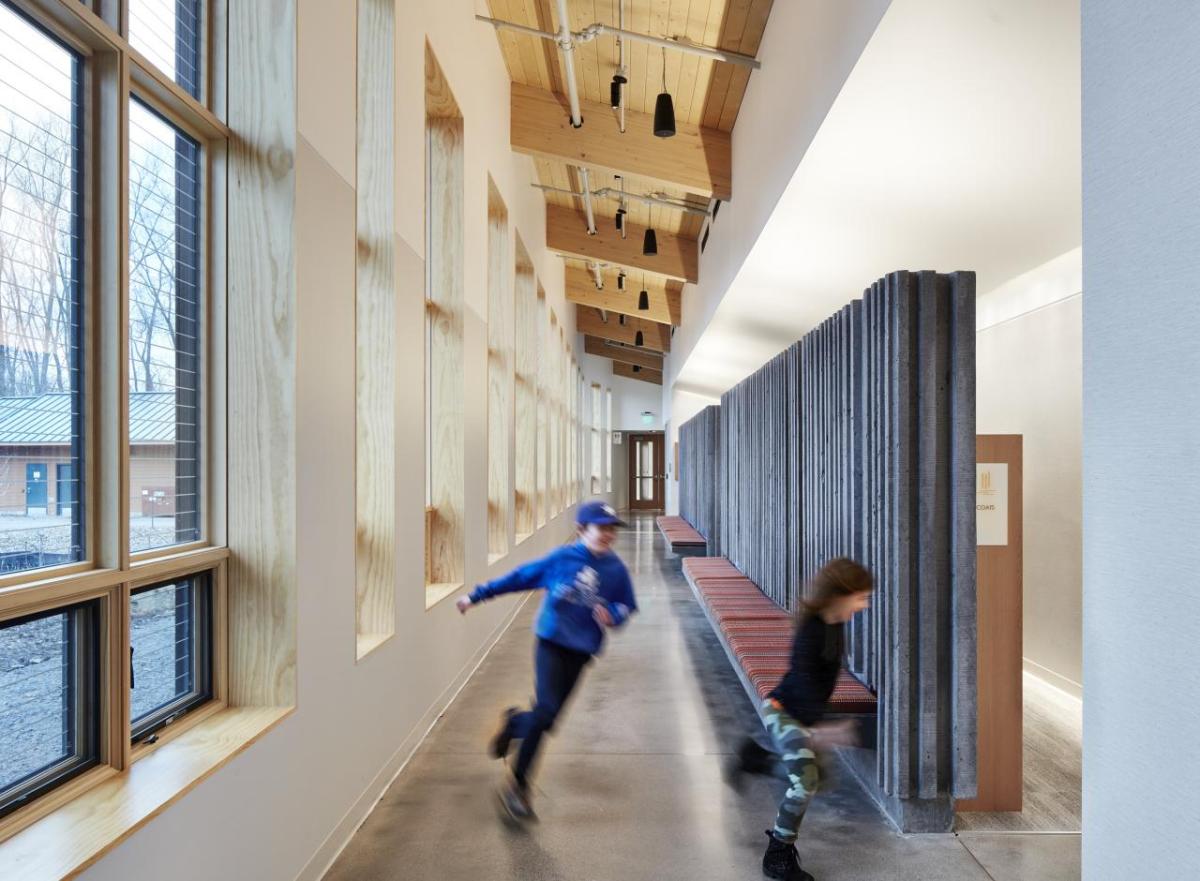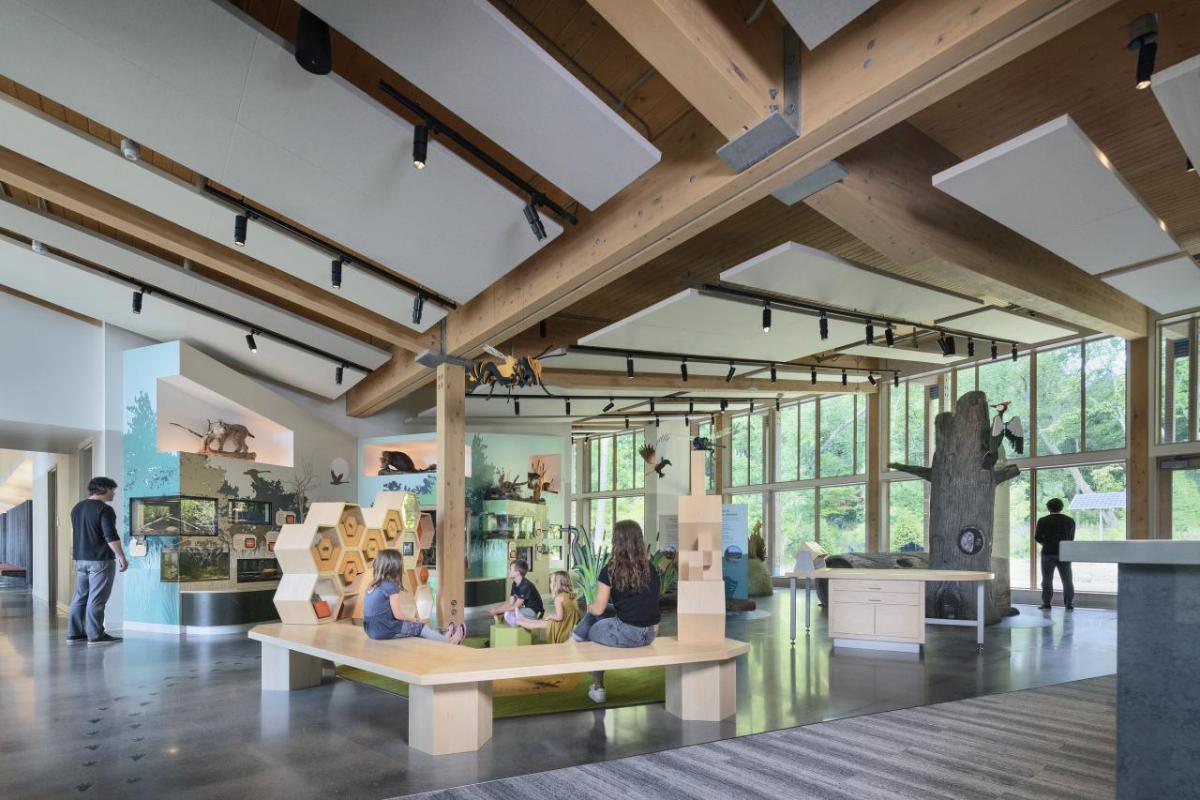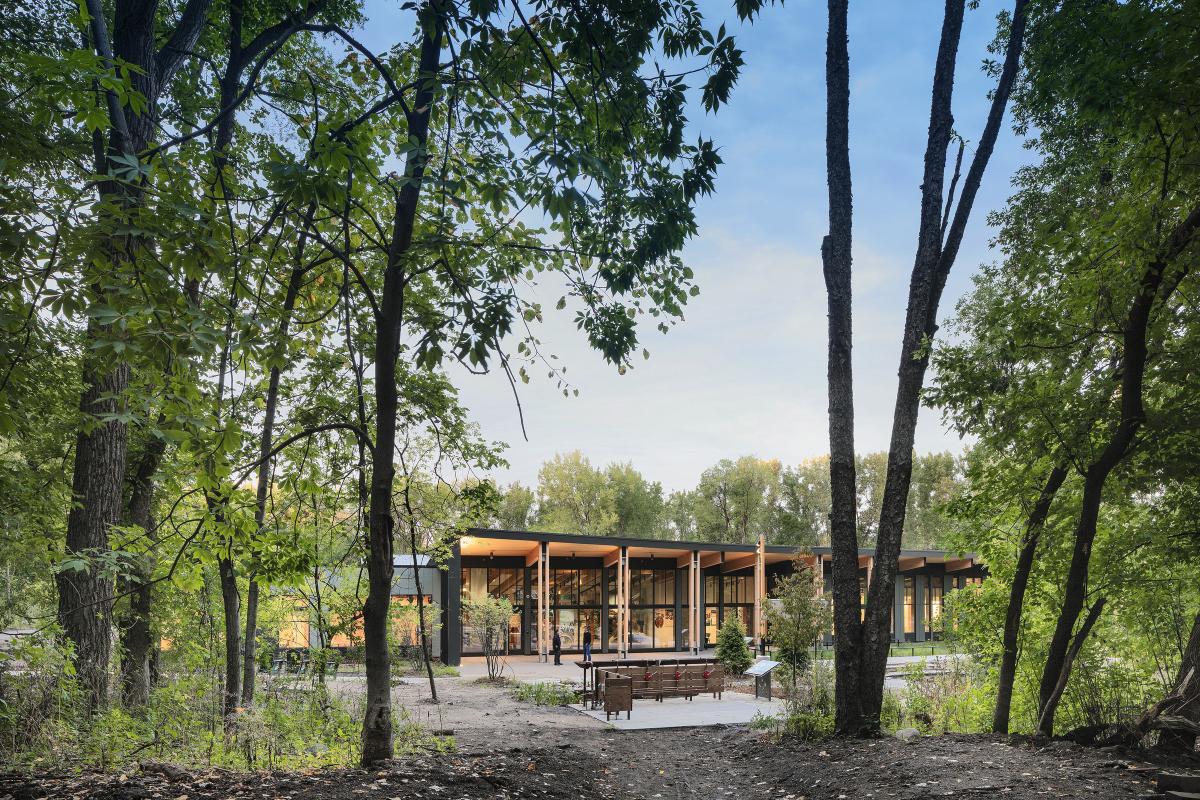Building a Gateway to Community Through Design
The Westwood Hills Nature Center reflects the shared responsibility to shape a livable future.
The Westwood Hills Nature Center, located in St. Louis Park, Minnesota, is a 160-acre nature park consisting of prairies, forests, and marsh areas surrounding a lake. Opened in the 1950s, it remains a popular destination for nature enthusiasts and provides visitors with hiking trails and an educational center.
Designed by HGA, the project recently won an American Institute of Architects (AIA) Committee on the Environment (COTE®) Top Ten Award, the architecture industry’s highest honor for sustainable design.
The project addresses two major challenges: optimizing building operations to maximize programming impacts and providing a high-performance design to reach a zero-energy goal. More than simply a new recreational facility, the building serves as a multi-faceted gateway, creating new connections at a physical, educational, and civic policy level.
In 2016, the City of St. Louis Park—responding to the need to replace their beloved but small and aging facility—initiated a master planning effort to address challenges with the building, assess programming and facility needs, and to establish a relevant shared community vision for the nature center. The 13,500 SF building, completed in 2020 by a design team led by HGA, is a gateway to the park, allowing visitors to experience and learn about the surrounding landscape. The site design and architecture of the new building create a unique and immersive experience, reinforcing human connection to the natural world.
Physical Gateway
The principal mission of the Westwood Hills Nature Center is to connect people to nature through its facilities and programming, and the new site and building design create a more universally accessible entry into the landscape, encouraging people of all ages, backgrounds, and abilities to experience the place.
Siting the building as a welcoming gateway to the preserve was critical for two reasons: creating the perception of belonging and security in the natural landscape, and to increase physical accessibility to promote engagement with the site for all. Inside, program spaces provide maximum flexibility for use by all types of community groups, increasing facility access. The exhibits and art installations reveal aspects of the surrounding landscape, to help connect all to nature.
In addition, the building placement on the site is key to maximizing solar gain and positioning the geothermal well field; HGA holistically orchestrated the development of the building’s massing and façade with the engineering team’s energy approach. This strategy also accounts for the human factor within a built environment.
Visitors to the nature center experience framed views to the natural surroundings from indoors, creating a strong, immersive environment. Outside each multipurpose room, a concrete thermal mass wall absorbs heat and forms an alcove for hanging coats, while also providing thermal comfort throughout the year. Lighter interior and exterior surfaces reflect daylight to the soffit above to brighten the alcoves. The timber structure expresses a literal connection to the surroundings while the inverted roof form demonstrates sustainable design strategies such as sun shading and rainwater collection, which double as interpretive site features.
Educational Gateway
While the building and site design serve as a literal threshold to the park, the nature center’s exhibits form an analogous interpretive gateway to the surrounding landscape.
The Westwood team deeply connected with the philosophy of land conservancy and appreciation for nature interwoven within the design concepts. A forward-thinking client, the City had a clear and ambitious goal for this project: a net-zero energy building that reflects their commitment to environment stewardship of Westwood Hills and the greater St. Louis Park community. The building was envisioned as a teaching tool, and each effort and strategy is integral to the experience of the space itself, demonstrating and celebrating how net zero can be achieved in a northern climate. Extensive studies throughout all project phases guided the team to passive and active energy strategies.
Another key was educating staff and providing tools that encourage them to “play the building like an instrument”. A green light in the staff space indicates prime moments to open the windows for natural ventilation, door lites provide visitors with views into typically hidden mechanical rooms, and a cut-out in the floor slab gives a glimpse into the radiant heating systems—all features that staff incorporate into their lessons.
The project’s exposed and integrated systems, responsive form and textures, and elemental materiality create an architecture for its place that propels the client’s mission and demonstrates high-performance and responsible resource use. The impact is tangible to the visitor experience.
Policy Gateway
Though the primary mission of the nature center is to connect people to their environment, the City also challenged the team to create a zero-energy building to serve as a pilot for its new Green Building Program and Climate Action Plan.
The City has taken significant steps towards reducing greenhouse gas emissions, and per the Climate Action Plan’s mandate, all future construction projects that receive funding from the City of St. Louis Park will be required to meet a new standard: zero-energy. This means that each building’s energy usage and production will be balanced annually or even produce excess power.
The Westwood Hills Nature Center was the first targeted zero-energy building developed under the Climate Action Plan, reaffirming the initiative in practical and concrete terms. In 2022 the project achieved Zero Energy Certification from the International Living Future Institute, a distinction “recognized worldwide as one of the highest aspirations in energy performance in the built environment.”
“Since we are asking our own residents and businesses to take measures related to the city’s Climate Action Plan, we knew we had to lead by example with this new building,” said Cindy Walsh, St. Louis Park Deputy City Manager. “We’re proud to have created a model that inspires visitors to implement sustainability measures in their own lives.”
Since its opening, the building design and energy-efficient systems have served as an important public-facing informer to developing policy in the region and nationally, providing a case study showcasing the impacts of an integrated design approach with passive energy reduction strategies, a high-performance envelope, advanced lighting, and effective use of proven heat pump technologies to eliminate the use of operational fossil fuels.
Yet the key impact will be the knowledge gained from this project over time. The team will continue to actively monitor the site, comprehensively participating in the post-occupancy stage and gathering information for future projects. This project is a prime example of what is possible in the built environment, and a reflection of the shared responsibility to shape a livable future.
Learn more about sustainable design at www.hga.com.

